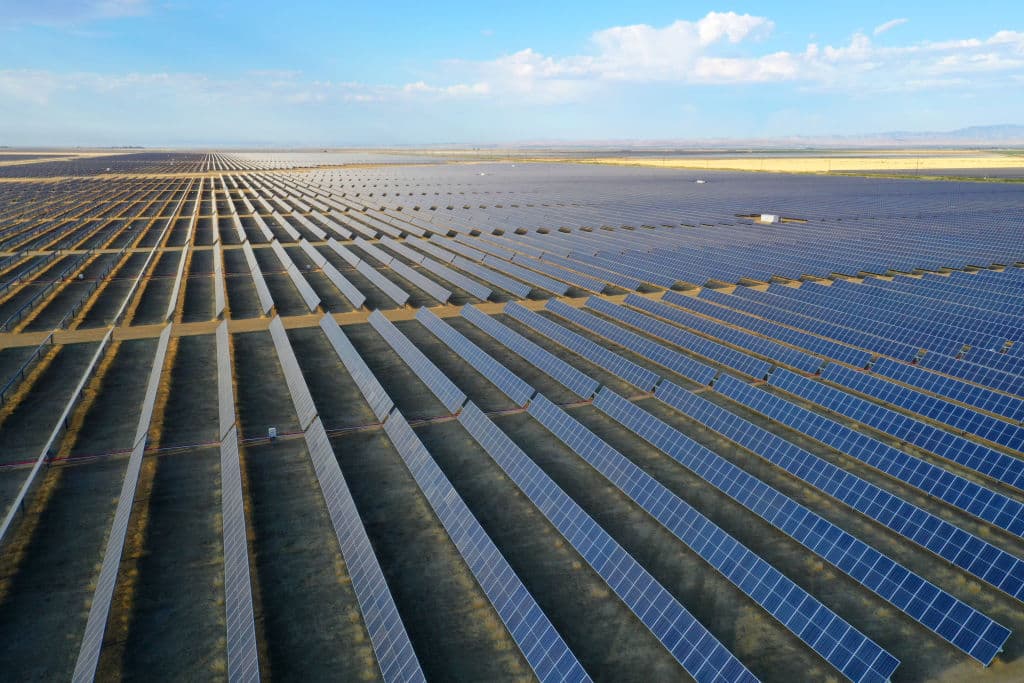Historic Senate Climate Deal Would Reduce Emissions 40% By 2030

 Why you can trust us
Why you can trust us
Founded in 2005 as an Ohio-based environmental newspaper, EcoWatch is a digital platform dedicated to publishing quality, science-based content on environmental issues, causes, and solutions.
On Wednesday, the U.S. Senate worked out a deal for a reconciliation package that includes $369 billion toward climate and energy funding. The deal comes after Senator Joe Manchin, D-W.V., reversed his initial decision against the bill, citing concerns over increasing spending amid rising inflation. The bill, if passed, would reduce emissions by 40%, compared to 2005 levels, by the end of this decade.
The Inflation Reduction Act of 2022 (H.R. 5376) could be the biggest clean energy investment in U.S. history if it passes. Previous versions of the bill that were turned down included over $555 billion for clean energy, including solar, wind, nuclear, and batteries. But Manchin was a primary and vocal opponent of the bill, and his vote was necessary for unanimous Democratic support in the Senate. Only 2 weeks ago, Manchin refused to approve investments toward climate action.

“After many months of negotiations, we have finalized legislative text that will invest approximately $300 billion in Deficit Reduction and $369.75 billion in Energy Security and Climate Change programs over the next 10 years,” the senators said in a joint statement. “The investments will be fully paid for by closing tax loopholes on wealthy individuals and corporations.”
The budget toward clean energy in the current deal includes tax incentives for solar, wind and hydrogen powers as well as direct air capture technologies, which capture carbon emissions from the atmosphere, low- or no-emissions vehicles, and domestic mineral mining for the production of batteries for electric vehicles. The bill also includes a concession to Manchin that requires the Department of the Interior to reinstate oil drilling in the Gulf of Mexico, after a 2021 auction was vacated by a federal judge, as well as requires new leases in the Gulf.
But Manchin isn’t the only person that could stall the bill. According to Axios, Senator Kyrsten Sinema, D-Ariz., has yet to comment on the package. “We do not have a comment, as she will need to review the text,” a spokesperson told Axios’ reporters Alayna Treene and Hans Nichols on Wednesday.
The bill is expected to reduce emissions by 40% by 2030. The base line for this reduction is 2005, when carbon emissions were nearly 6,000 million metric tons. The U.S. Energy Information Administration expects carbon emissions for 2022 to be around 4,971 million metric tons. The 2005 base line was established after consultation with Leah Stokes, a climate and energy policy professor at University of California, Santa Barbara, who called the bill “transformative.”
“I think that the last two weeks have shown us what the price of failure is. That it is an unlivable planet,” Stokes said.
If passed, the legislation could greatly help President Joe Biden in his goal of decarbonization by 2050.
The bill also includes provisions for healthcare, including expanding the Affordable Care Act and pandemic-related insurance cost relief, allowing Medicare to work with pharmaceutical companies for lower drug costs, and providing free vaccinations to seniors.
The funds would come from updated tax law that is expected to raise $739 billion in the next 10 years, but families with income under $400,000 and small businesses will not face new taxes. The tax law includes a new minimum 15% tax on corporations with $1 billion or more in profits per year and will go into effect after the 2022 tax year.
According to the bill, $433 billion of the $739 billion raised from the tax law will go toward investments in healthcare and clean energy, while the additional money is expected to go to reducing federal deficits.
After 18 months of negotiations, the package is not yet a done deal, though. The Senate Parliamentarian must determine if the proposal meets rules for a budget reconciliation process, which Democrats are hoping to pursue to avoid a Republican filibuster. If it meets the guidelines, the Senate will vote on the bill. It also must pass in the House of Representatives before heading to Biden for passage.
Subscribe to get exclusive updates in our daily newsletter!
By signing up, you agree to the Terms of Use and Privacy Policy & to receive electronic communications from EcoWatch Media Group, which may include marketing promotions, advertisements and sponsored content.

 233k
233k  41k
41k  Subscribe
Subscribe 




